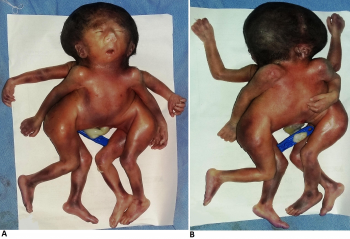
The case presented here is of a 25-year-old, multigravida, who gave birth to conjoined twins vaginally at 30 weeks of gestation. There was no history of routine antenatal care or prenatal ultrasound. The mother gives no history of smoking, drugs or exposure to any teratogens during her pregnancy, but she gave a history of previous preterm twin delivery. The twins died soon after birth.
The Conjoined twins
who were born as a result of the pregnancy in the discussion here were
premature with low birth weight (1.08 kg) and had a low APGAR score of 1.
Examination revealed a single upper body i.e. the twins had joined head and
thorax with one head, face (two eyes, two ears and a nose), neck, thorax and
abdomen. Also, only one umbilical cord was observed. The thorax had four
nipples, two in front and two at the back. There was one spine but upper and
lower limbs were four each. Two female genitalia were observed. Such conjoined
twins are classified as – cephalothoracopagus.
One fertilized egg gives rise to identical twins, also known as monozygotic twins. This occurs when the split occurs within the first two weeks of conception. If this split delays to after the first two weeks, conjoined twins are formed. They share a single placenta, amniotic and chorionic sac; and obviously the same gender as the twins develop from one fertilized egg.
Conjoined twins are a rare find, with an incidence of 1 per 50,000 to 1 per 200,000 births, more common in female foetuses than males. Cephalothoracopagus twins are even rarer, in fact, the rarest of all the types of conjoined twins, seen in 1 in 3 million, till date only 200 cases have been reported.
Following are the known types of conjoined twins:
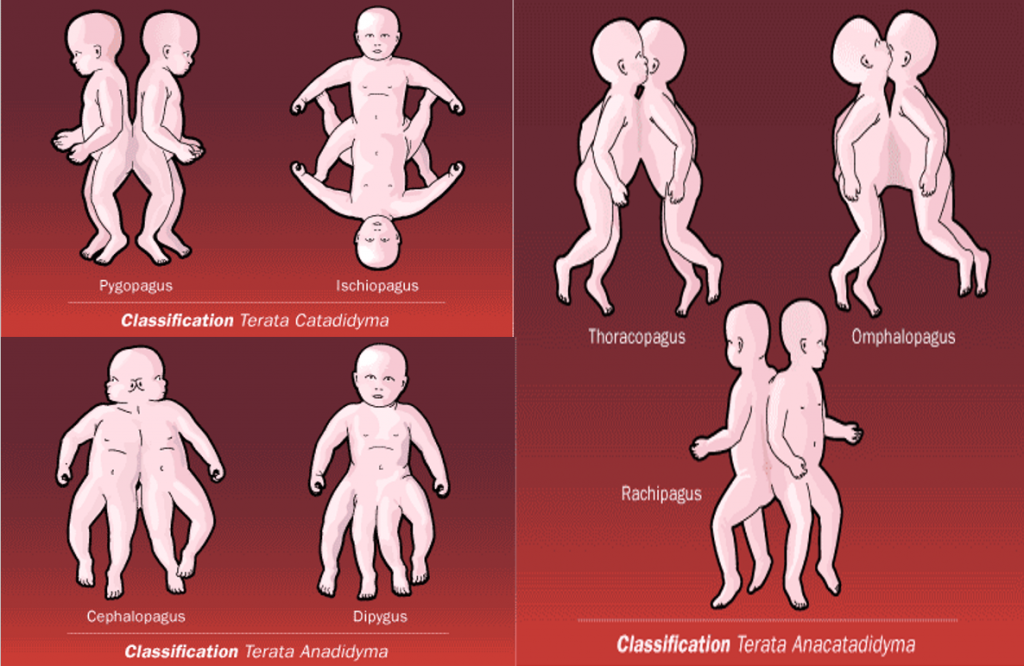
| 1. Terata Catadidyma: Two separate upper bodies and a joined lower body. | 2. Terata Anadidyma: Two separate lower bodies and a joined upper body. | 3. Terata Anacatadidyma: Joint along the midsection of the body. |
| 1a. Pygopagus: Joined back-to-back, at the rump (19 %) | 2a. Cephalopagus: Fused heads (2%) | 3a. Thoracopagus: Fused chest; (may have a single heart) (40 %) |
| 1b. Ischiopagus: Joined at the sacrum, with two spines (6 %) | 2b. Syncephalus: Fused faces | 3b. Omphalopagus: Joined abdomens. In the region of the umbilicus (33%) |
| 1c. Dicephalus: two heads and one body | 2c. Cephalothoracopagus: Fused heads, faces and thorax | 3c. Rachipagus: Joined along the spine; above the sacrum |
| 1d. Diprosopus: Two faces, one head and one body | 2d. Dipygus: Single upper body and two lower bodies (abdomen, pelvis and legs) |
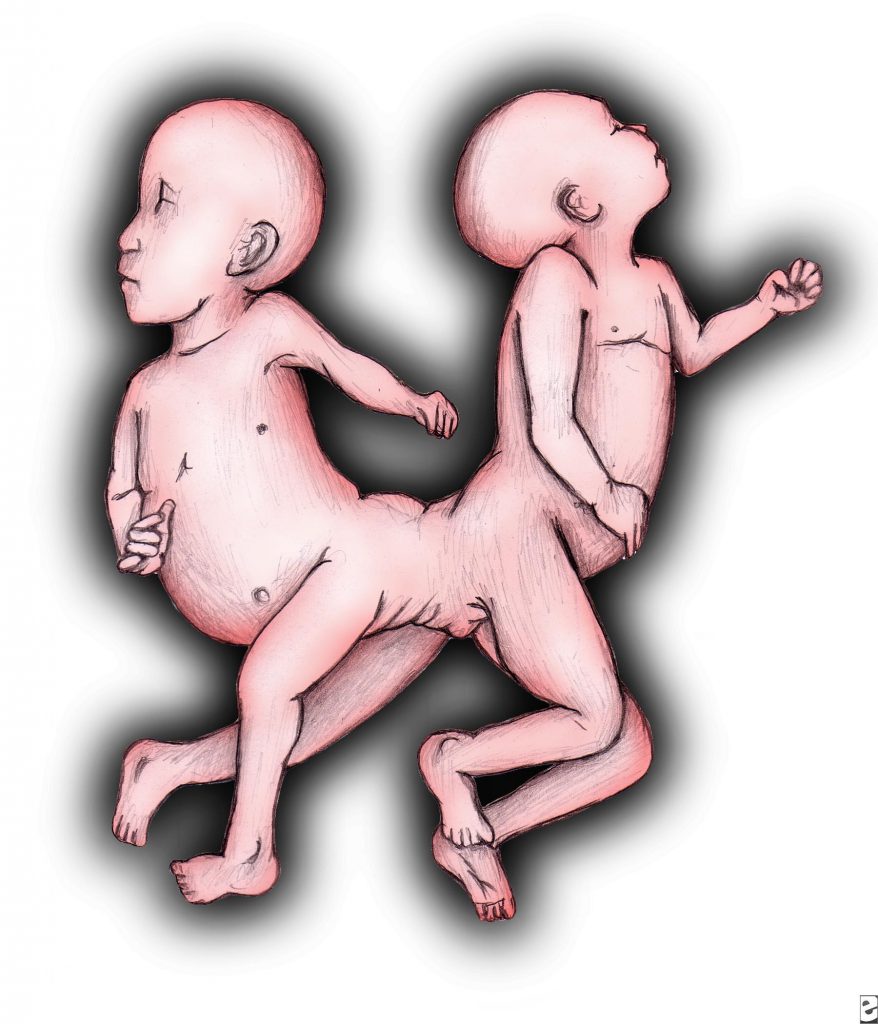
Image Source: Medscape©
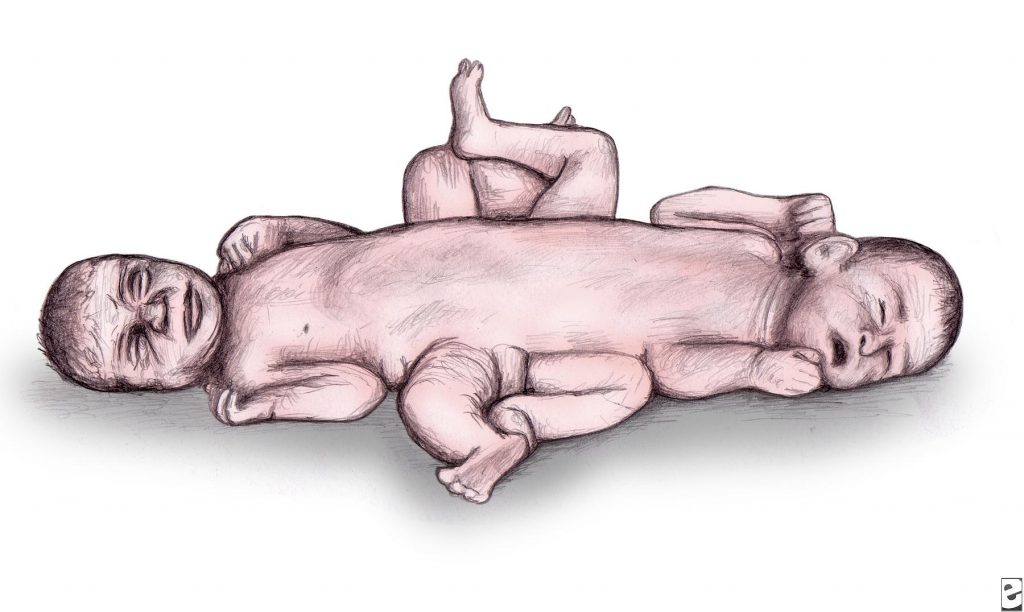
Image Source: Medscape©

Image Source: Medscape©
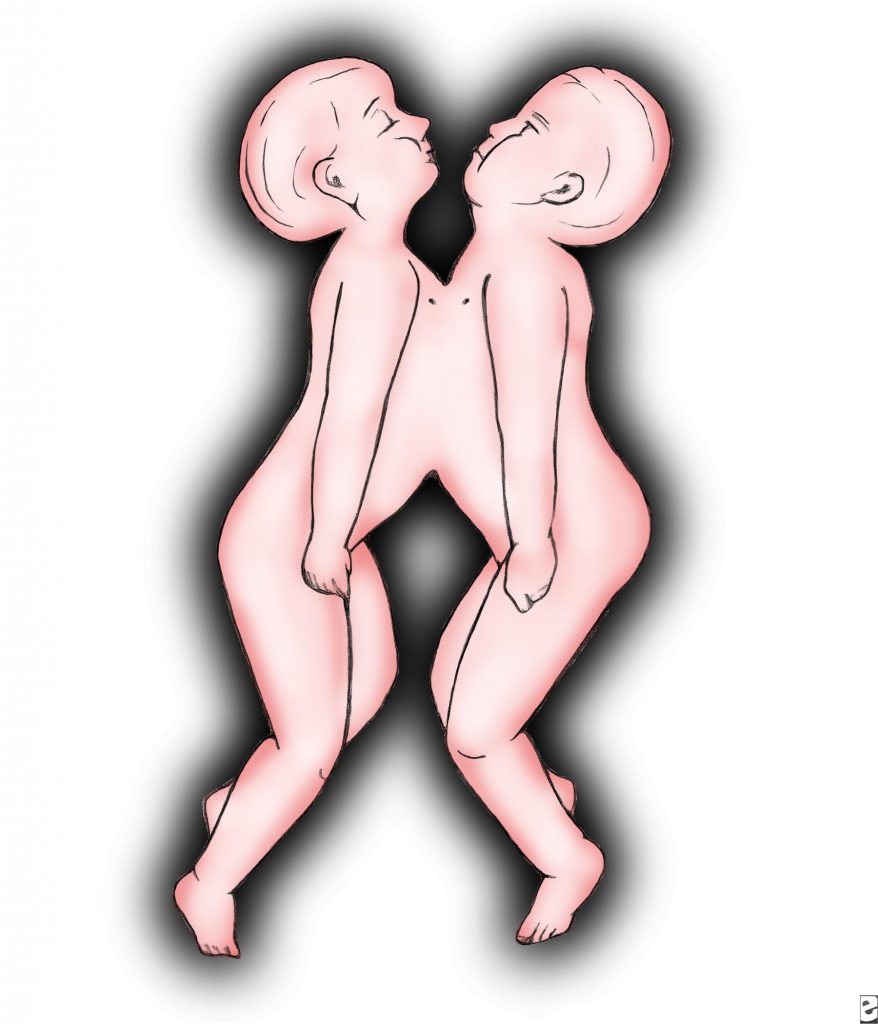
Image Source: Medscape©
The type of conjoined twin depends upon the stage and the extent of separation.
Conjoined twins have a poor prognosis. A majority die soon after birth, while some die in utero. Of those who live enough to face a surgical separation, 50% succumb to death postoperatively.
among all the types, omphalopagus have a better prognosis whereas cephalothoracopagus types have an extremely poor prognosis as they have a single brain, heart and often fused gastrointestinal tracts.
Conjoined brain and heart are a contraindication to surgery.
Sometimes the choice of surgery has to be made at the expense of the loss of one twin to save the other. Nevertheless, there are many legal, ethical and medical issues regarding the treatment of conjoined twins.
Food for thought:
– Does a positive history of previous conjoined twins increases the chances in future pregnancies?
No, conjoined twinning is sporadic!
References
Author: Khalid Kamal, M. M. (2018, May 8). Conjoined Twins. Retrieved from Medscape: https://emedicine.medscape.com/article/934680-overview
Maj Ganesh Saravagi, S. C. (2017, October 27). ScienceDirect. Retrieved from Elsevier: https://www.sciencedirect.com/science/article/abs/pii/S0377123717311425
NEER, K. (n.d.). How Twins Work. Retrieved from how stuff works: https://science.howstuffworks.com/life/genetic/twin4.htm
Koreti, S., Prasad, N., & Patell, G. S. (2014). Cephalothoracoomphalopagus: a rare type of conjoined twin. Journal of clinical neonatology, 3(1), 47–48. https://doi.org/10.4103/2249-4847.128737
The Turkish Journal of Pediatrics 2018; 60: 751-754 Case Report DOI: 10.24953/turkjped.2018.06.020




